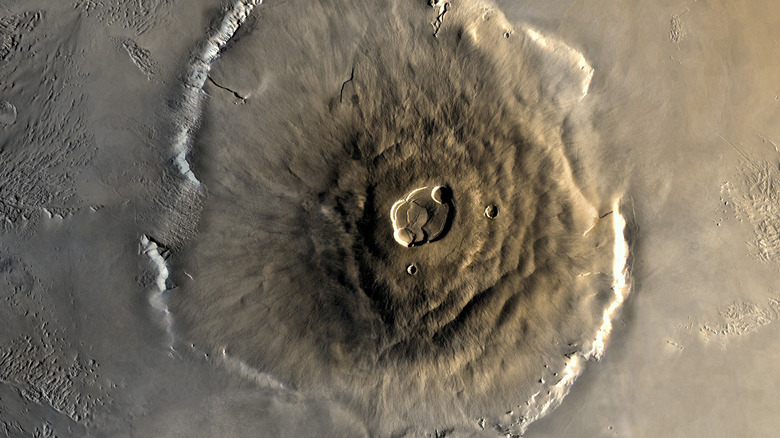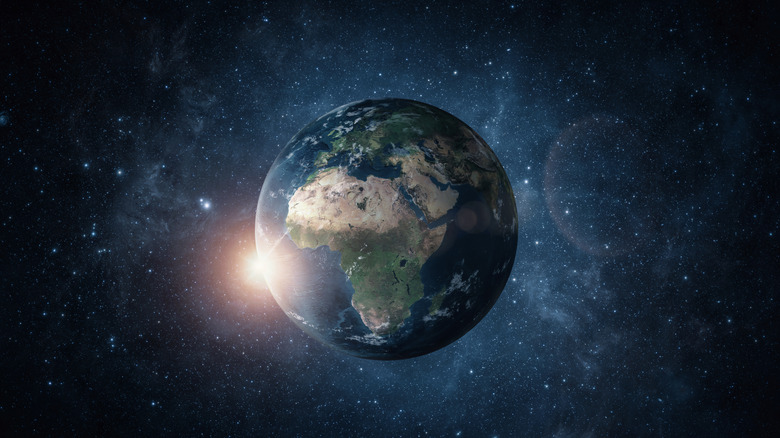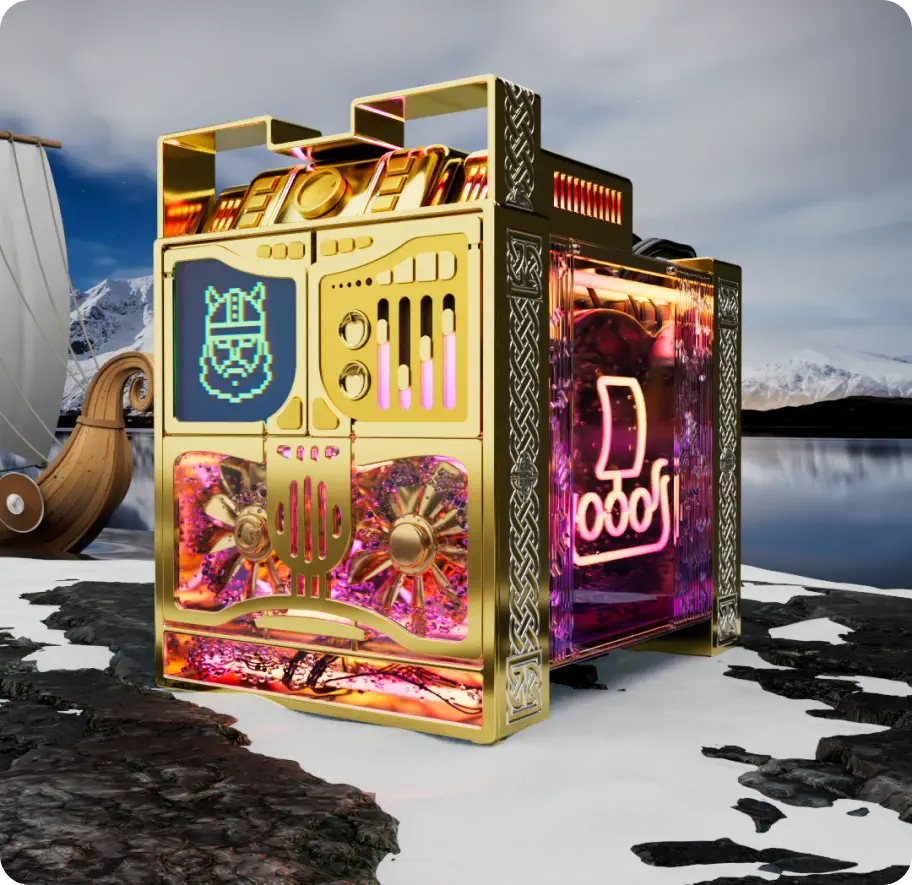
This Planet Has A Bigger Volcano Than Any On Earth
Although volcanoes have bedeviled the inhabitants of the planet Earth for millennia, our home planet is not the only place in the solar system where volcanoes are present. According to the Jet Propulsion Laboratory, there are other volcanoes throughout the solar system. Some are active; Jupiter’s moon Io was observed experiencing volcanic activity in the 1970s. Elsewhere in the solar system are dormant volcanoes, mountains that haven’t erupted for hundreds of millions, if not even billions, of years.
The planet Mars is itself home to dormant volcanoes, according to the Smithsonian National Air and Space Museum. Though it’s been eons since they erupted, at one time the planet was volcanically active, melting ice deposits and releasing liquid water onto the surface. What’s more, according to Space, evidence suggests that the planet may have had a volcanic eruption as recently as 50,000 years ago. Mars is also home to a volcano so staggeringly tall that it would easily eclipse not only the biggest volcanoes, but also the highest mountains on Earth.
Mars' Olympus Mons is three times higher than Mt. Everest
The astronomy community has been aware of various mountains, valleys, and other geological formations on Mars for the better part of a century, first through observation with telescopes, and later, through spacecraft.
Back in the 19th century, Italian astronomer Giovanni Schiaparelli was first able to discern the vague shapes of the Martian mountain that would eventually be named Olympus Mons. According to Space, scientists would later determine that the giant mountain is actually a volcano.
The mountain is breathtakingly large. Because of the irregular shape of some of its features, it’s difficult to pin down just exactly how far up it rises from the plain below, but by most estimates, it’s in the neighborhood of 16 miles high. By comparison, Mt. Everest is only 5.5 miles tall. Olympus Mons is approximately 374 miles across, and is roughly the same size as Arizona.
Unfortunately, if you were able to see Olympus Mons from the Martian ground, you wouldn’t be particularly impressed. So gentle is its slope that it would appear as merely a slight rise in the elevation of the ground, and it would remain so until you reached the top. Once there, you’d have no idea that you were on the surface of the mountain, as its flat caldera stretches as far as the eye can see in every direction.

The Reason Lucille Ball Thought She Was Going To Die On The Set Of I Love Lucy

What Is Actually Written In The Dead Sea Scrolls?

Will The Milky Way Galaxy Last Forever?

The Strange Things William S. Burroughs Is Buried With

The Messed Up Truth Of Inuit Identification Numbers

The Meaning Of The Number 3 In The Bible Explained

The Iconic Song Liza Minnelli Has Avoided Singing For Most Of Her Career

The True Impact Of The Atomic Bomb According To Japanese Citizens

Prince Secretly Bought The House From This Movie

What You Should Know About Secret Service Earpieces























